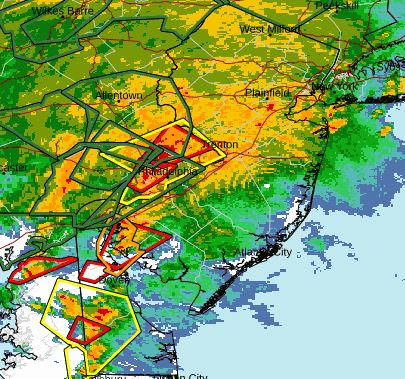By Lev D. Zilbermints
Tropical Storm Ida battered New Jersey on September 1, 2021, bringing chaos and destruction. All 21 counties were declared under a state of emergency by New Jersey Governor Phil Murphy.
In a 10 a.m. September 3 press conference, Murphy himself reported that at least 25 people have died in New Jersey from the storm, including four who died in an apartment complex in Elizabeth.
No county was left untouched, according to media reports. From Passaic County in the north to Gloucester County in the south, Mother Nature delivered a powerful blow. Streams became rivers, roads became impassable, Newark International Airport was temporarily shut down, Seton Hall University was closed down, rivers are still overflowing.
“Local Talk” used information from both local sources and other media to get a complete picture of the disaster that Tropical Storm Ida brought New Jersey.
Essex County
According to New Jersey Advance Media, Newark International Airport was temporarily shut down September 1, with nearly 400 flights cancelled. According to the njtransit.com website, “NJ Transit rail service, except for the ACLR and Morris and Essex Line remains suspended due to storm impacts. HBLR modified weekend service. Newark Light Rail Service has resumed operation and is on or close to schedule in both directions. Check alerts. Buses and LINE are operating, expect delays, cancellations and detours due to major flooding from storm impacts. System-wide cross-honoring is in effect with NJT and private carrier bus and light rail.”
Locally, at the intersection of 18th Street and Stuyvesant Avenue, there was a travel issue. Stuyvesant Avenue was closed on the left side, so cars and buses turned right in the direction of Irvington.
NJ Advance Media reported that more than 600,000 people remained without power, as of noon Thursday. In Essex County, 14,000 PSE&G customers were without power. JCP&L had 8000+ customers without power, almost 8000 in Hunterdon and 7500+ in Sussex.
Travel on Garden State Parkway, NJ Turnpike, remained suspended as many lanes were flooded, NJ Advance Media reported September 2.
As reported by the Setonian, on Monticello Avenue in Newark, about half a mile from Seton Hall, flood waters reached above the license plates of cars.
Seton Hall University was closed due to severe flooding, according to the alert sent to students on September 1. The Setonian reported that “Due to excessive rain and flooding, Seton Hall campuses will close on September 2, 2021. This applies to day and evening classes at the main campus, Law school and IHSC. Essential personnel, as notified by their supervisor, should report to work as directed.”
Photographs taken by Daniel O’Connor, the Setonian’s news editor, were posted online. They showed the TV studio in Seton Hall’s Fahy Hall under inches of water, with more pouring in, the Setonian said.
The Setonian reported that “several classrooms on the basement of Fahy Hall were also flooding, with ceiling tiles sagging under the weight of dripping water. Some rooms had peeling paint and walls that were wet to the touch.
At Essex County College, several floors had tiles in the ceiling that showed traces of leaking.
Rutgers issued a statement saying, “On Friday, September 3, all classes in New Brunswick, Newark, and RBHS will be online where possible. All nonessential employees will continue to work remotely.”
In New Brunswick, Route 18 at Rutgers University was underwater on September 2, 2021. NJ Advance Media reported that Tropical Storm Ida caused the waters of the Raritan River to rise.
New Jersey Institute of Technology switched to “synchronous online” instruction for in-person classes. Administrative offices were to work remotely for the remainder of September 2, the college website said.
Manville, Bound Brook, Bridgewater, Somerville, Lawrence, Lambertville, were some of the places that experienced severe flooding. Burlington saw a tornado. Harrison Township saw houses destroyed, a NJ Transit train stalled on tracks, and flooding.
As reported on September 2 in the media, many rivers have yet to reach their flood limit. For this reason, the true impact of Tropical Storm Ida is not completely known yet.


